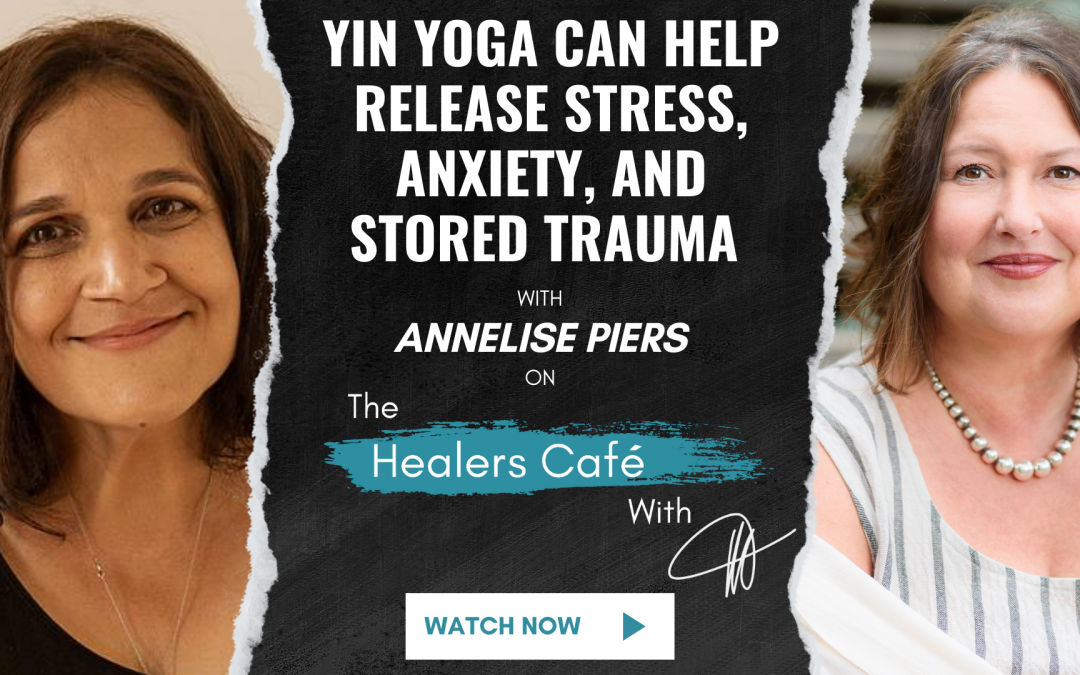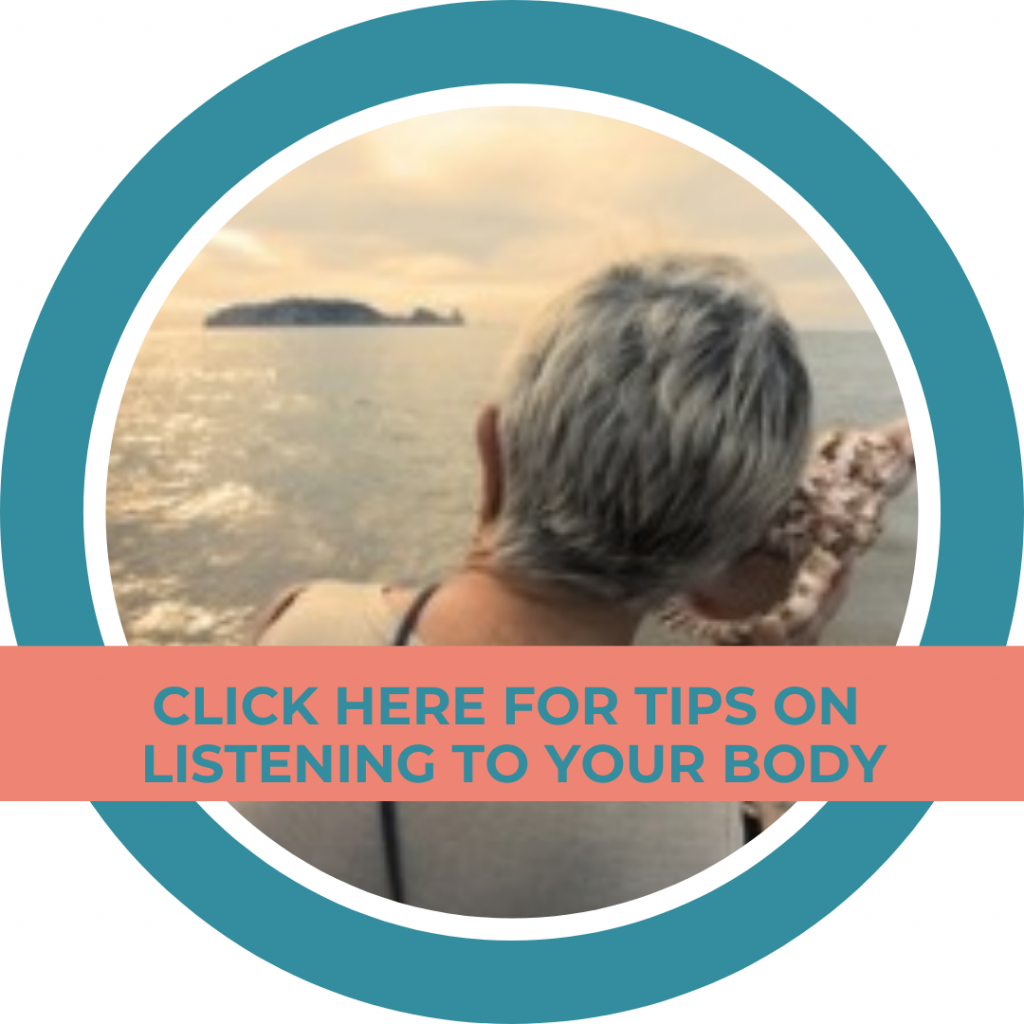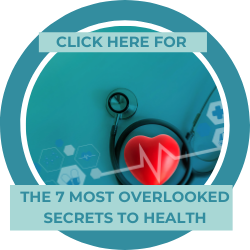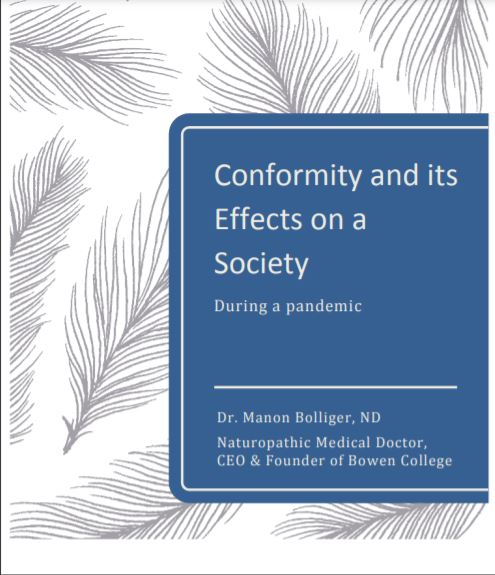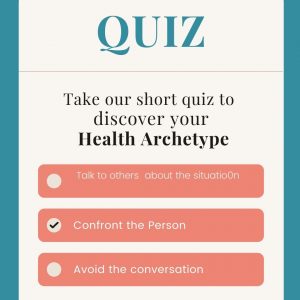yoga Shala. And I was on the mat doing a yoga class. I looked down with the teacher, she was there and I was crying on the mat for more reason. And I said, Oh, I want to do that. I want to do that.
Manon Bolliger 03:26
Wow. Very interesting. And so, give us a little bit what. So, this is the Yin Yoga itself, right?
Annelise Piers 03:36
Yeah.
Manon Bolliger 03:36
So, tell us a little bit. What’s different about it what it is, you know, for people who may not know that there’s a difference between different yoga?
Annelise Piers 03:47
Yes, in so Yin is again, I feel it’s like an acquired taste. It’s a very slow form of yoga. But it isn’t restorative. So, you’ve got Hatha aware, you know, most of us know Hatha. And Hatha is the more dynamic it’s you, you do have your breath centered focus that you do have mindfulness all you know all of the beautiful benefits of yoga. Yin, it somehow, it’s a more passive practice, you hold a pose for about three minutes, sometimes five, but the good news is most of the poses are on the mat. So, it’s not like you’re standing up in the air you know engaging muscle that is not yin. Yin is focused on the deeper connective tissues. So, you actually release muscle and you still feel you know challenge or stress in certain parts of the body we call the target area. Because you want to target what you will be working with these 12 energy meridians. along which you know You want to clear the blockages or anything that might be stuck in those channels?
Manon Bolliger 05:07
I don’t know Yin Toga. I’ll just tell you. But I like what you’re saying about it, though.
Annelise Piers 05:18
It’s hard to explain.
Manon Bolliger 05:20
Nobody resonates, you know, in that I don’t like quick things I, in the work I do, which is Bowen therapy, you know, you put in very little information and basically, the body does a lot of the deep work all by itself. Right? So how does, like in when you’re holding a position? Explain that, like, explain the work or lack of effort or lack of effort? Like how is?
Annelise Piers 05:54
Yeah, a very good question. Because, again, it’s really something that you experience on the mat. And that you gauge for yourself, because you and I say this, your breath is your best teacher in your practice. So, you’re on the mat, let’s say you’re taking universe simple. Even if it’s the pose, I mean, you might know the eagle, Eagle hands, right. So even when you’re there, you will arrive at a place where the body feels a sensation, in say, the back of the shoulders, maybe some of us might feel it a little bit more on the arms as well. And whilst you’re there, you start to soften any engagement, but the sensation still remains because you want to get into the deeper connective tissues.
Manon Bolliger 06:41
Okay.
Annelise Piers 06:42
And then you can, you know, you can modify it to get deeper into what’s gravity and reflect what choose like finding that gold Goldilocks spot, but you want to make sure that it’s effortless.
Manon Bolliger 06:55
Effortless, okay.
Annelise Piers 06:59
And you will know, you will know if it’s working for you, because your breath will be effortless.
Manon Bolliger 07:05
Okay, so the breath. Yeah, it’s your…it’s your assessment tool. If your breath is effortless, then you are…you’re holding a position effortlessly, basically.
Annelise Piers 07:20
Yeah.
Manon Bolliger 07:21
So, tell me more about the breath. Anything?
Annelise Piers 07:28
Yeah. So again, I’m, you know, I’m gonna have the trains teachers, as you know. So, I’ve explored the other forms of breath in the pranayama that goes within. So, you’ve got all sorts of different Pranayama’s that build up to, that you train yourself to because pranayama is about being able to work with your breath and control your breath. But you really need to work with the practitioner to do this slowly. And to kind of build up to that capacity or that skill. So not everyone should just jump into doing pranayama practices. What I like about a yin breath is that we’re not forcing, we’re not controlling, we’re not counting, holding, none of the above. Yin is about allowing, it’s about accepting. And we work with your breath that is in one of the energy centers called the lower dantians. So, you have three dantians. And this is the kind of breath you might experience in Chi Gong, tai chi. So, it’s really touching the core of your being right under the navel. You’re just being aware of the breath in that part of the body. You’re not even inhaling too deeply. You’re just taking what you really need in this moment. So, it’s a gentle inhale. And then it’s a mix in order to complete exhalation, complete so even when you’ve come to the end of your XA could squeeze out just a little bit. It’s based in Dallas philosophy.
Manon Bolliger 09:18
So, I’m seeing fully and then the automatic refill. Right.
Annelise Piers 09:23
Exactly. And while you’re holding your process, there are many things your mind can busy itself with. One of them is the breath. So, you inhale it just still you’re pleasantly full and then exhaling completely and then just a little bit more. And you’ll come to a place where you can enjoy that pose. It’s a natural pose you were talking about right did you get to explain that pose.
Manon Bolliger 09:53
Right? Okay. Hmm, interesting. Yeah. Oh, yeah. I’m so what has it done for you? But what else obviously, it’s bigger than that.
Annelise Piers 10:10
It is yeah, I think, primarily for me, and I know I’m not, I know there’s miles to go. I mean, it is a journey. But I think the practice has helped me explore this cause of the breath off the mat. So, you know, my, my world is outside this, I’m in my yoga movement moment. But my world is outside of the story is really my dog, my husband, my family, all of you know, living in society in those challenges. So the real work happens out there. So, this is like my retreat. This is my lab, this is my practice, and come here and literally catch my breath.
Manon Bolliger 10:54
Interesting.
Annelise Piers 10:56
Yeah. But it’s easy, because, you know, thank you, it’s a decision you make saying, you know, so you’re not getting into the why am I getting mad or whatever, you know, and sometimes my husband will say, Oh, my God, with Yogi you shouldn’t be getting angry. And I, and I know I’m getting angry at it. I think that’s the difference. Your awareness and then being able to catch yourself.
Manon Bolliger 11:23
Yeah, catch yourself and understand what’s going on. Like, is it like…like you learn to be more of the observer than just the doer that doesn’t notice, you know, after the fact. Yeah. So, tell me about that, I don’t know, the word use was a gap, or in the breath, the pause, yeah, explain that to me.
Annelise Piers 11:49
And so again, you know, none of this is a control thing. Except, of course, you’re just urging the body to exhale more completely, because we tend to be so fast in the way we breathe, we tend to also be much more up in the, you know, the chest, which could possibly, unconsciously create that stress response in the body because we breathe shallow, breathe too fast. So here, sometimes, all you need to do is just watch. Even if you spend two minutes just watching your breath. Without any changing doing, you will notice it slows down. I mean, I did a beautiful workshop once with one of the teachers from the Himalayan masters, the execute things and ashram in India and one in I think it’s California wasn’t close to you, I guess. I’m not sure where you are Manon. But, I mean, this is this was amazing. We just sat there and watched our breath. And that’s what you do in you know, again, practice, you can also do these in Hatha. It’s just reminding people that when you practice yoga, it is the breath. It’s not just the pranayama. It’s your breath through the inhale, it’s the breath in through the exhale, the breath moves the body through the poses.
Manon Bolliger 13:19
So, what’s the difference between…cause people hold their breath. And the hold is not the pause though.
Annelise Piers 13:31
In different forms of pranayama. There is, you know, a deliberate holding of the breath. And that, again, is designed to help build capacity. But you only do that once your body is ready, once your mind is ready. Because again, when you’re working with pranayama practices, you want to make sure that you’ve come to a place in your yoga, in your yoga practice, when you have been able to clear out a whole lot of the emotional debris. It’s all playing with, you know counts, and holding because otherwise it could just create a little bit more or a lot more angst,
Commercial Break 14:19
What would your life be like if you were pain free? If you were one of the millions who suffer from chronic pain but thought of just one day without it may seem impossible. This is often because conventional medicine tends to fall short in the treatment of pay, opting to prescribe pills or recommend surgery rather than getting to the root cause of the problem. But if you are suffering with emotional or physical pain, there is hope. Join the founder and CEO of Bowen college Manon, Bolliger J. live online for your body mind reboot, learn how to listen to your symptoms and get to the root cause of your pain. Plus be trained in basic Bowen therapy moves, so that you can reboot your body for optimal health. You don’t have to live in pain, you can heal, stop the pain pill cycle by visiting www.yourbodymindreboot.com To learn more, and to register.
Annelise Piers 15:21
So, it’s really essential for yoga practitioners to know that in Hatha we have the eight limbs of yoga, and you progress through those limbs, the first two being, you know, the tenants by which you want to live the yamas, and the yeomas, and that’s the yoga off the mat. It’s not violence, it’s your truth. It’s spending time in, you know, in study. And then you start doing the asana practice, and then you do the pranayama. Then you do you know, the mind practices.
Manon Bolliger 16:11
Interesting. Yeah, I mean, so it’s, it’s a whole philosophy, that’s often at least in our, in our society, you know, often it’s not really taught that way. It’s, it’s like an exercise routine.
Annelise Piers 16:30
And I think that’s why I love you know, being with my yoga teacher, because for them it is you’ve got to be authentic. You’ve got to be exploring yoga from its roots, and its philosophy. So even when I teach Yin, it’s about exploring the practice from his essence. So, we do an Ojai breath. And Ojai breath is in what’s called and we think does breath or the oceans breath, which again, is a beautiful breath that anyone can use. In an ashtanga yoga practice, which is an even more dynamic than Hatha, the Ojai breath is a lot more loud, you kind of constrict the back of your glottis. And you can hear the Ashtanga is actually practicing, because you can hear the breath. In yin, it’s so soft and gentle, it’s just gently in the back of the throat. And the breath keeps you centered, it keeps you in the here and now. So, you can do that when you’re walking and running. And you can do that between calls between zooms. Just to center yourself.
Manon Bolliger 17:52
So how, how do you because you mentioned NLP and I’m looking at that, like, how do you incorporate that in your practice? Or in your teaching? Or how does that work?
Annelise Piers 18:06
In some way, and I know that a lot, a lot of teachers, because now you know, I’ve been looking on the web. And I know that a lot of folks do incorporate NLP in their yoga practice. But I think for me, it’s more about the language. And so, when I studied with Dr. Adelaide, I licensed with him in 2012 to 2015. And then, you know, I lost my dad, so I haven’t gone back to study with him. But the lessons will remain, and you constantly keep studying, because he keeps improving or he keeps coming out with new techniques. And like, he started with the yogi’s, he came to India, and he studied with the yogi. So, you know, all of those practices make a lot more sense now because I’m kind of getting the back end of how the mind and the body and the breath work from the yogic psychological perspective. So I’ve been able to bring the two together. And I’m zeroing in specifically on the language to neuro linguistic programming. So, I use metaphoric language. Say, if someone’s come to me sort of one on one, I know they’re working on a sudden, something, I want to use conversational cues, to help them move through something that’s keeping them stuck. Maybe they’re dealing with a decision that seemed at a crossroads. They don’t know whether to go left or right. And also the insights on how the energy meridians work, and what emotional aspects in each of these organ systems cater to. So, I bring the yin with the NLP and the language on the mat. I do a lot of that in the group classes, I think that’s the beauty of metaphor. It can fall in any one sense in so many different ways.
Manon Bolliger 20:10
So, give us give us an example that you either recently or just that comes to mind, you know, so we get a real graphic.
Annelise Piers 20:21
Yeah. Okay, so let’s say, Okay, let’s say we’re working on issues of the heart. And various kinds of issues of the heart, right? It could be sadness, it could be resentment, it can be…it could even be anger. And typically, in the yin tradition, the heart is, you know, associated with the emotion of joy. But if it’s out of balance, there’s this manic kind of joy, or really, really, really low. So, and even in Taoist philosophy, the heart is actually in the thinking mind. So, while in Western psychology, all of you know, so in NLP, we look at how the world through our senses, all our senses, so it’s the visual and the audio repeat.
Manon Bolliger 21:14
Could you repeat that it cut out. Just repeat the last sentence you said.
Annelise Piers 21:19
That’s gonna be hard, but they just kind of get. So, we explore, or we interpret our experiences, through our senses. And it could be so what we think against what we see, or when we hear, that creates, you know, the feeling, but it’s also what is your taste, it’s also what we smell that, you know, creates this interpretation of our experience, you and I could be having the same, you know, slice of cheesecake, but it might stir up a different experience for you based on maybe your centers. And it would be obviously very different from me from my centers. And what yin leaves us that’s happening in the heart. So, it’s very interesting when all because you’re working with energy meridians, but you’re also catering to the way the regular man thinks. So, as you said, the body doesn’t stay, you’re getting into a voice that just works with the energy meridians that’s important. The heart, the pericardium is also one of the systems that protects the heart, from the onslaught of emotions from different organs. So, this is yin. In the NLP, you’re really kind of, again, working with the pause between the trigger and the response. So initially, you know, something happens, your mind is interpreting that experience and then you respond either in a good or not so great way. So, it’s in the pause, that you’re in helping this individual saying, Do I want to destroy I want to respond differently. And then, you know, you kind of create those new neural pathways you work with them, you create them through either playing with the whole Photoshop editing form, and you only had. But on the mat, and yin, I do it through language. So, I might, you know, paint pictures for someone create more auditory experience while I talk, I talk, I don’t talk too much on the mat. But explore, like, you know, I might create an imagery of exploring the space of your heart. And then I get them to saying, you know, the thing about what’s, what’s it like, you know, is there any kind of fragrance in those movies, they’re aligned, that you sense that you start talking perhaps about you know, is it do you have a window open? Have you shut yourself out? Can you look under the rug, you know, for anything that’s been left there for ages? So, you know, metaphorically, someone’s on the mat for five minutes at a time, an image and because again, these emotions are stored in the fascia. About 98% of your nerve endings are in the fascia. So, you’re marrying them to and again, it’s the boss, it’s the breath.
Manon Bolliger 24:38
Well, it’s, you know, essentially, I was just reviewing something today, right? Like literally this morning. And I was thinking about how when people discuss, for example, pain. If it’s pain, let’s say in their muscle, they’ll talk about a very different, you know, they’ll say burning or pulling or that but if it’s fascial pain, they will often express it as an emotion, like it’s paralyzing pain.
Annelise Piers 25:16
Wow.
Manon Bolliger 25:17
Like they’ll have, you know, I was trying to think of other examples, but this particular client that I used as an example, you know, that was he had a paralyzing pain. And it’s funny, they use emotional words to describe it. And when you’re saying, you know, indeed that the emotions are in the fascia. I mean, that makes sense.
Annelise Piers 25:45
Yeah, but thank you for that. And even, that’s a rabbit hole I want to go down now.
Manon Bolliger 25:53
That’s for interesting. Yeah. So, I mean, our time I can’t believe how quickly I don’t think we were holding our breath. But, um, any last words or something yeah, that you feel compelled to share with people about either your experience about the Yoga itself, and the breath work or the journey, any of it?
Annelise Piers 26:25
I think I start with what you just said, It is a journey Manon. And, you know, people think that yoga is a quick fix. Some people think that NLP is a quick change. Yes, there are certain techniques that can create, you know, really quick change in the way you think you build new neural pathways. I think, for this to really stick, it’s happened. So, you show up on your mat, your mat can be your chair, your mat can be you standing in the supermarket line. And just start with your breath. Even if you’re just exhaling longer, if that’s the biggest hack, I can give anybody. It’s just catch yourself when you’re feeling, you know, stressed or anxious for no reason. And then as if you were blowing out through a straw, as long as you are comfortable doing and you will be able to find that pause, you will be able to make better decisions. Easier said than done.
Manon Bolliger 27:49
It’s taking the time to do it. Right. Like, you know, I find ultimately most things are easy. It’s just you have to actually do them. And that’s where you know, that sometimes the weakness is is you forget that.
Annelise Piers 28:07
Unless you have developed the habit to your practice, so that it kicks in automatically. So that’s what even you know, when you’re doing the NLP and you’re doing a couple of mindfulness techniques, you want to do them at least 21 days. That’s how long it takes to make a habit. Or so the next time I see that chocolate cake, for example, that I don’t want to be eating going forward, I really want to make some broccoli. The next time I see a chocolate cake, I would go like, where’s the broccoli? That’s the possibility of you know, of just being able to decide or to choose differently.
Manon Bolliger 28:48
Yeah, and to take that that moment to align the decision you’re making with what you actually want. Right. You know, which is I think we forget that we just react automatically. Yeah, and that’s not often what we want. So yeah, I think it’s slowing down basically. Breathing.
Annelise Piers 29:14
That’s it, slow things down. Slow things down.
Manon Bolliger 29:19
Well, thank you. It’s Annelise right? Thank you so much for spending some time and educating us on this and it was very nice to hear.
Annelise Piers 29:33
Thank you, Manon and I hope I’ve created some yinsters in the bargain.
Manon Bolliger 29:45
Thank you.
Annelise Piers 29:45
Bless you. Bye bye.
ENDING: 41:33
Thank you for joining us at the Healers Café with Manon Bolliger. Continue your healing journey by visiting TheHealersCafe.com and her website and discover how to listen to your body and reboot optimal health or DrManonBolliger.com/tips.
